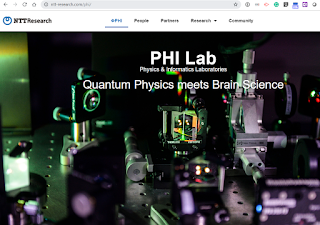NTT Research is collaborating with Stanford University on a National Science Foundation (NSF)-funded initiative into Coherent Ising Machines (CIMs), which exploit unique combinations of optical and electronic components for connectivity, speed, scale and memory.
The NSF has granted a $10 million Expeditions in Computing (Expeditions) award to Stanford’s Department of Applied Physics for research into the use of CIMs for optimization, machine learning and neuromorphic computing.
NTT Research confirmed that its PHI Lab is already conducting related joint research with Stanford, and PHI Lab Director Yoshihisa Yamamoto will serve as an external unfunded collaborator to the Stanford-led NSF Expeditions CIMs team.
“I am excited that the NSF has deemed this project worthy of significant support and look forward to collaborating with the Expeditions team in whatever way can best add value to this important undertaking,” said NTT Research PHI Lab Director Yamamoto. “Stanford is a key research collaborator in our consortium of institutions exploring this new computing paradigm that draws upon quantum physics, neuroscience and optical technology, and we strongly believe that continued collaboration in basic research is key to driving further advances in this field.”

The principal investigator for this five-year project is Hideo Mabuchi, professor and former chair of Stanford University’s department of applied physics in the School of Humanities and Sciences. The rest of the team includes three from Stanford and three from other universities. The Stanford co-investigators are Marty Fejer, professor of applied physics; Surya Ganguli, associate professor of applied physics; and Marco Pavone, assistant professor of aeronautics and astronautics and director of the Autonomous Systems Laboratory. The other co-investigators are Peter McMahon, assistant professor, applied and engineering physics, Cornell University; Alireza Marandi, assistant professor of electrical engineering and applied physics, Caltech; and Davide Venturelli, quantum computing team lead and science operations manager of the Research Institute of Advanced Computer Science (RIACS) at USRA. In addition to PHI Lab Director Yamamoto, the three external collaborators are Eleanor Rieffel, senior research scientist and lead, Quantum AI Lab (QuAIL) NASA Ames Research Center; Helmut Katzgraber, principal research manager, Microsoft; and Ken-ichi Kawarabayashi, professor and Deputy Director, National Institute of Informatics (Tokyo).
NTT Research PHI Lab launched its own CIM-based initiative last fall, when it announced five-year joint research agreements with six universities (CalTech, Cornell, Michigan, MIT, Stanford and Swinburne), one US Federal Agency (NASA Ames Research Center) and one private quantum computing software company (1QBit). “The significant investment by NSF into this Stanford-led initiative complements our own efforts,” said Kazuhiro Gomi, NTT Research President and CEO. “In effect, taken together, they represent an important private-public strategy for supporting this critical area of research.”
















